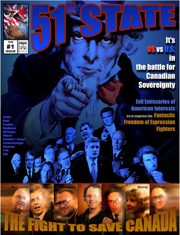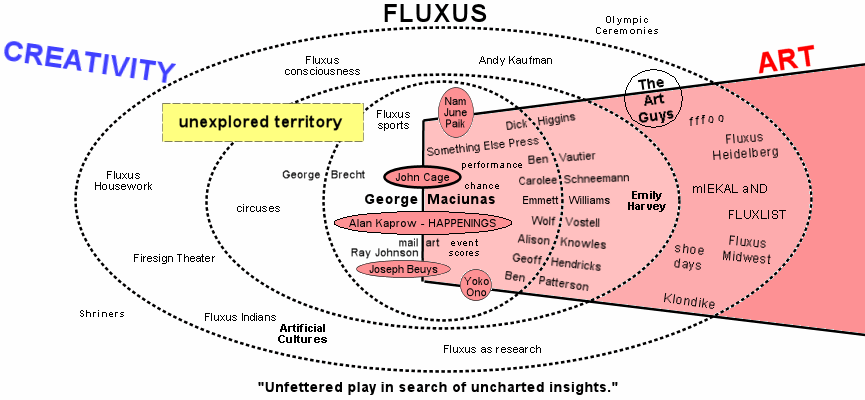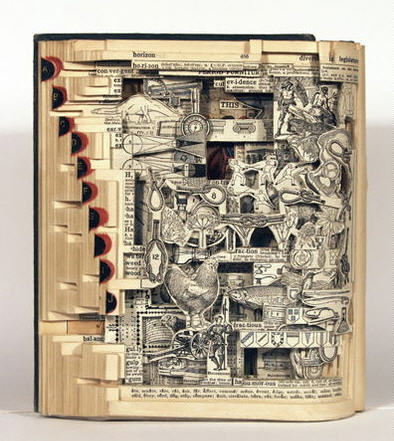
Shannon sent me a link to the The Museum of Forgotten Art Supplies at Drawger.com. Many of the items are more design or publishing supplies. Many of them are evocative of “the good old days” when we used analogue tools.

Shannon sent me a link to the The Museum of Forgotten Art Supplies at Drawger.com. Many of the items are more design or publishing supplies. Many of them are evocative of “the good old days” when we used analogue tools.
EMiC] Editing Modernism in Canada is a neat project that was funded by SSHRC as a Strategic Cluster. Dean Irvine at Dalhousie leads it and the idea is to produce “critically edited texts by modernist Canadian authors”, especially those out of print. It has a nice link to learning in that one reason for editing modernist Canadian texts is to make them available for teaching and learning. Deeper than that, however, is what seems to be an apprentice model of involving (graduate) students in editing. The network of partnerships is impressive too.
 Once I notice one comic being used to introduce computing issues I’m told of another. Google commissioned the Chrome comic, Gordon Duncan of Appropriation Art has released an interactive comic book 51st State that is about copyright reform in Canada and freedom of expression. It appropriates images and words from the internet and has links back out to information. A remarkable demonstration of how graphic arts can be political and provocative.
Once I notice one comic being used to introduce computing issues I’m told of another. Google commissioned the Chrome comic, Gordon Duncan of Appropriation Art has released an interactive comic book 51st State that is about copyright reform in Canada and freedom of expression. It appropriates images and words from the internet and has links back out to information. A remarkable demonstration of how graphic arts can be political and provocative.
Thanks to Erika for this.

There is a nice collection of essays on CH Working Papers on Reassembling the Disassembled Book. These are some of the papers that were presented under that theme at the Society for Digital Humanities meeting in 2007 in Saskatchewan which I blogged before. One paper I was pleased to read because it went by too quickly at the conference is Richard Cunningham’s Dis-Covering the Early Modern Book: An Experiment in Humanities Computing. This paper describes and theorizes a one day experiment Richard and others tried in taking apart an early modern book, scanning it, and reassembling as a electronic book. I love these “what can you do in a day experiments.”
Bad enough we had all agreed, before gathering in Victoria, to disassemble one book; in the end we discovered we would need to dismantle two books to achieve our representational goals. This need to use (or perhaps more appropriately abuse) two books rather than one was a direct result of the planning we undertook prior to entering the ETCL. We began with the basic idea of digitizing an early modern book and defining the project so that it could be completed in a single day. The opportunity for this project came in the form of a selection of early modern books that had been rescued from the discount bins of a couple of London’s antiquarian book stores. (Richard Cunningham, Dis-Covering the Early Modern Book: An Experiment in Humanities Computing)
There are links in the paper to a number of videos and images, including a long video that shows them cutting the pages. Not unlike my Text in the Machine series of photos, but for a far more important purpose.
Well, I was wrong. I thought the Kindle, like other attempts at e-books would be a failure. According a New York Times story by Saul Hansell (Aug. 12, 2008), The Lessons From the Kindles Success argues that while the market of readers may be small, there seem to be a enough readers who read a lot and want the convenience of loading it up on a device. I suspect the ease of use is also a feature.
It seems that Amazon.com’s Kindle is not the flop that many predicted when the e-book reader debuted last year. Citibank’s Mark Mahaney has just doubled his forecast of Kindle sales for the year to 380,000. He figures that Amazon’s sales of Kindle hardware and software will hit $1 billion by 2010.
The New York Times has a story by Norimitsu Onishi,
Thumbs Race as Japan’s Best Sellers Go Cellular – New York Times, about how novels written in snippets on cell phones and posted to special blogs and then published in print were five of the top ten best-selling novels.
The boom appeared to have been fueled by a development having nothing to do with culture or novels but by cellphone companies’ decision to offer unlimited transmission of packet data, like text-messaging, as part of flat monthly rates. The largest provider, Docomo, began offering this service in mid-2004.
I wonder if the serialization over time builds anticipation and sales? Does writing them on a cell phone change the prose?

I was down in Chicago for the MLA convention and visited the Art Institute of Chicago. Besides the spectacular collection, they had a small display of materials related to Fluxus – a conceptual art group of the 1960s that is still going (depending on who you believe.) Fluxus was influenced by John Cage and included artists like Joseph Beuys, Yoko Ono, and Nam June Pack. Fluxus believed in “intermedia” – the confrontation of media. The Wikipedia entry summarizes their philosophy:
I picked up a strange book by a Fluxus poet, Emmet Williams, A Flexible History of Fluxus Facts & Fictions that contains digitally remastered kunstfibels or art inventions. It is a inventive history of Fluxus that is itself annotated art, but also, as Williams explains, a primer (another sense of “fibel”.) For a contemporary sense of Fluxus see the Fluxus Portal from which the diagram above comes. Diagramming their history and influences is one feature of the exhibit that attracted me. Fluxus founder Macunias was diagramming the flow of their history back in 1966. See Visualising Art History.

Shawn sent me this link for the The Most Unusual Books of the World. Loyal readers will have seen my Text in the Machine experiment on Flickr (where there is a photoessay).
McMaster’s archives actually have a number of English fore-edge painted books that were, apparently, popular gifts in their time.
I’m trying to imagine a visualization tool that would show you selected passages cut sculpturally out of a 3D book.
The e-book that seemed to be dead as an idea is back. Sony has their Reader which uses e-ink to offer a more paper-like reading experience.
 Amazon has just announced the Kindle which has a keyboard and can EV-DO free wirless access so you can order material from Amazon without connecting to your PC. The Amazon video mentions that you can automatically get newspapers and updates from blogs.
Amazon has just announced the Kindle which has a keyboard and can EV-DO free wirless access so you can order material from Amazon without connecting to your PC. The Amazon video mentions that you can automatically get newspapers and updates from blogs.
I’m guessing one of the real strengths of Kindle is Amazon – that they will have the best content and with EV-DO they will have easy access to content wherever you can get a connection. On the other hand the Kindle looks dorky (not that the Sony looks much better.) As they say, WWAD (what would Apple do?)
To be honest I thought the e-book reader as a device was dead after the last round of devices like the Rocket eBook. I figured tablet PCs and PDAs would make dedicated readers obsolete – we do after all read lots of pages off screens already. See Cory Doctorow on Ebooks: Neither E, Nor Books. But, I was wrong … it seems the big guys think there is a market for such appliances.
 boinboing has a short entry about a German robot that is exhibited writing out the bible. The robot is a RobotLab project (site in German.) The image comes from Marc Wathieu’s Flikr set for the RobotLab where the description of the project reads:
boinboing has a short entry about a German robot that is exhibited writing out the bible. The robot is a RobotLab project (site in German.) The image comes from Marc Wathieu’s Flikr set for the RobotLab where the description of the project reads:
The Kuka robot is silently writing a version of the martin luther bible, which was originally printed in a early font called “Schwabacher”, retranslated here by RobotLab into calligraphy. “Wolfgang von Kempelen, Mensch-[in der]-Maschine” exhibition, ZKM, Karlsruhe (D).
From the lab site it seems they have also programmed it to draw portraits.
Thanks to Lynn for this.